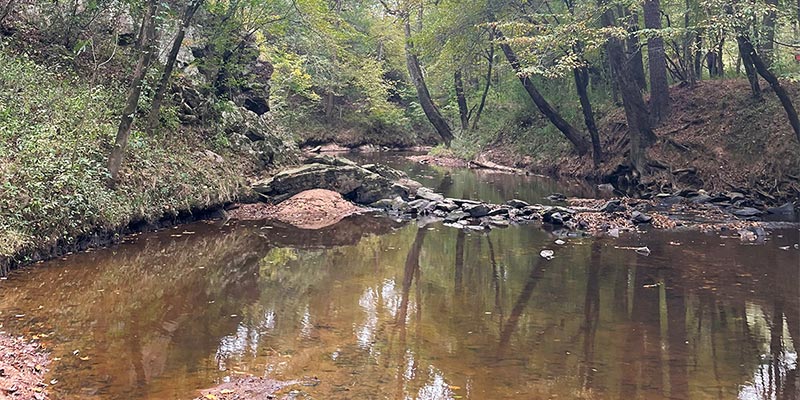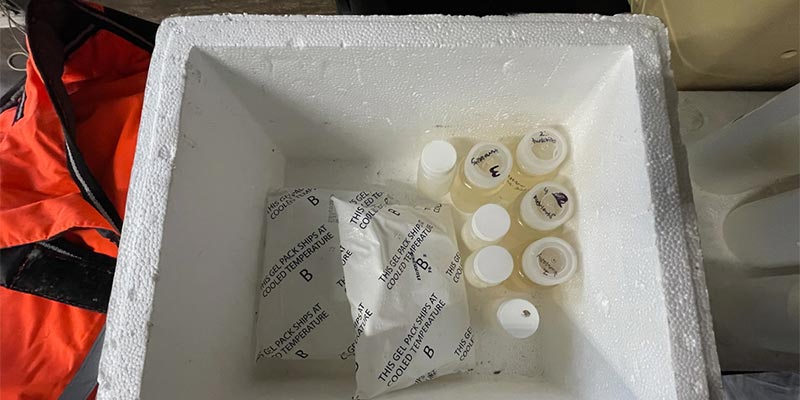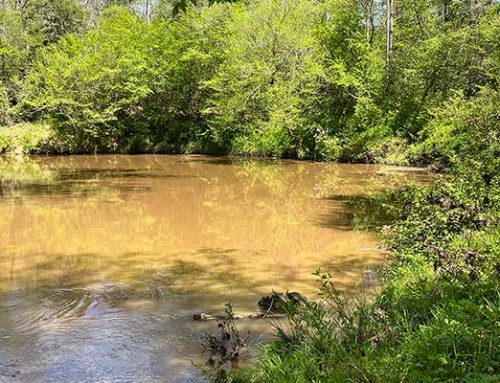From Creek to Culture Dish: Tracking Bacteria in Thompson Creek

When most people hear the word bacteria, they make a face. You might picture a messy kitchen sponge or that time someone warned you not to drink from the creek. But here is the thing – bacteria are not always the bad guys. In fact, they’re some of the most fascinating, hard-working, and yes, revealing little organisms out there.
Each month, when we head out to sample water in Thompson Creek Watershed, we’re not just scooping up water – we’re collecting an entire microscope world. One of the main things we test for is E. coli, a type of bacteria that tells us a whole lot about the health of our streams and creeks.
Now, E. coli (short for Escherichia coli) actually lives in all warm-blooded animals – including us. Most strains are completely harmless and even help us digest food. But when E. coli shows up in water, it’s a big clue that something from the land – like animal waste, leaky septic systems, or storm runoff from farms and yards – is washing into our waterways. In other words, E. coli acts like nature’s little detective, pointing us toward possible sources of contamination.

When we test E. coli, we collect a small water sample in a sterile bottle and take it back to the lab. There, we used a special growth medium that highlights colonies of E. coli after 24 hours of incubation. If the sample lights up with colonies, we know those bacteria are present – and that me4ans our local waters might not be safe for swimming, fishing, or wading.
The state of South Carolina uses E. coli as one of these key indicators for recreational water quality. Too much of it can mean an increased risk of illness for anyone who comes into contact with the water. That’s why these tests aren’t just about science – they’re about public health and keeping our community safe.
But here’s the cool part: bacteria data helps tell a story over time. By tracking E. coli levels across different seasons and locations, we can start seeing patterns – maybe after big rainstorms, or in areas downstream from livestock or older neighborhoods with aging septic systems. This helps local leaders and environmental groups like ours make smart decisions about where to focus clean-up efforts, education and restoration work.
So next time you walk past a stream and see us filling bottles and jotting down notes, just know there’s more going on than meets the eye. Those invisible bacteria are giving us clues about the land, the water, and how everything connects. They may be tiny, but they’re mighty storytellers – and they help us keep Thompson Creek clean, safe, and thriving for people and wildlife alike.
Who knew a little bacterium could do so much good?







